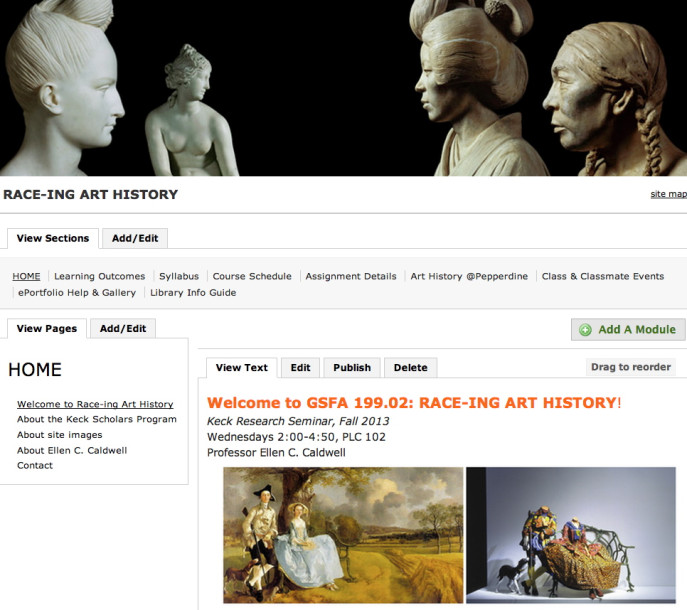
Last fall, I taught a first year seminar using electronic portfolios, or eportfolios. At the university where I work, I serve as the director of assessment in addition to being an adjunct professor of art history, so I saw this seminar as an opportunity to combine two interests: encouraging meaningful student reflections and creating valuable assessment data, using eportfolios as both the ways and means.
Thankfully, my university already had an eportfolio platform of choice, so I didn’t have to spend any time evaluating systems. Doubly thankfully, I was helping to pilot this program, so this class served as a nice time for me to delve into the platform, learning all of its possibilities and pitfalls simultaneously.
Building my course, I decided that in addition to creating my own faculty eportfolio, I should also have a course portfolio. Here, my syllabus became interactive, innovative, and fluid. Students would visit the course portfolio for weekly assignments, readings, and even a page featuring co-curricular classmate events. When a pertinent article came up in the newspaper, I could add the link into the appropriate weekly reading without sending out yet another class-wide email.
Besides the fluidity the portfolio’s adaptability allowed me as the instructor, the course website also encouraged (and amicably coerced) students to use the portfolio platform before they had even created their own individual portfolios. This increased the technical learning curve greatly.
Read the rest here at Art History Teaching Resources.
